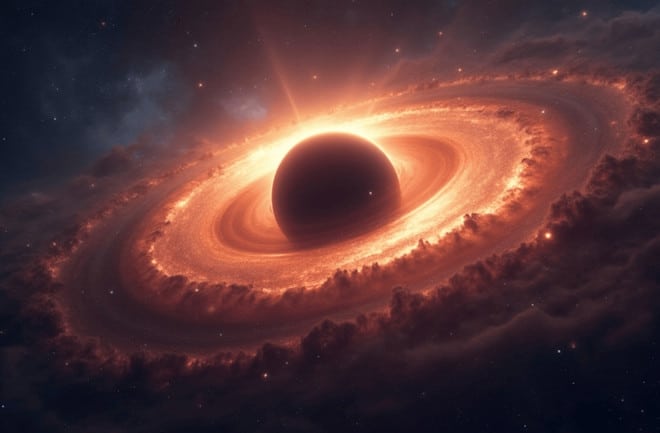JWST Discovers Black Hole in Intergalactic Space, Suggesting Uncommon Phenomenon

Astronomers have made a groundbreaking discovery of a peculiar black hole that is causing its host galaxy to wobble in a phenomenon known as “direct collapse.” This black hole is uniquely situated between two colliding galaxies, rather than in the center of either, suggesting it may have formed from a collapsing cloud of gas and dust. This finding supports long-held theories about black hole formation that had not been previously observed.
Discovery of the Infinity Galaxy
The Yale-led COSMOS-Web survey team has identified this unusual black hole within the Infinity Galaxy, which was formed from the merger of two disk galaxies. Lead researcher Pieter van Dokkum expressed that the location of the black hole was unexpected. Instead of residing in the nucleus of either galaxy, it is positioned between them and is moving in sync with the surrounding ionized hydrogen gas. This unique positioning and rapid movement suggest that the black hole may have formed in its current location, lending credence to the “heavy seed” theory of black hole formation.
The implications of this discovery are significant. The presence of supermassive black holes so soon after the Big Bang, approximately 500 million years later, challenges previous assumptions that such formations could only occur through the intense compression of gas around galaxies. Researchers have ruled out alternative explanations for the black hole’s origin, including the possibility of it being a runaway black hole or one from an unseen third galaxy.
Supporting Evidence for Direct Collapse Hypothesis
Preliminary measurements indicate that the black hole’s velocity aligns with that of the surrounding gas, providing further support for the direct collapse hypothesis. Data from NASA’s Chandra X-ray Observatory and radio signals from the Very Large Array confirm that the black hole is actively feeding, which adds to the evidence of its unique characteristics. Although this finding is not definitive, it stands as one of the strongest observational supports for the direct collapse theory to date.
Van Dokkum highlighted the significance of this discovery, noting that it represents a phenomenon that has not been observed before. Additionally, both galactic nuclei also contain active supermassive black holes, making this a unique triple-black-hole system. This intriguing configuration presents an exciting opportunity for further research into the nature of black holes and their formation.
Future Research Directions
The discovery of this black hole opens new avenues for understanding the early universe and the formation of galaxies. Researchers are eager to conduct further studies to explore the implications of this finding. The unique positioning of the black hole and its relationship with the surrounding galaxies may provide insights into the processes that govern black hole formation and evolution.
As astronomers continue to analyze the data collected from various observatories, they hope to uncover more about the dynamics of this triple-black-hole system. The findings could reshape current theories about the origins of supermassive black holes and their role in the evolution of galaxies. This research not only enhances our understanding of the cosmos but also fuels curiosity about the mysteries that still lie beyond our reach.
Observer Voice is the one stop site for National, International news, Sports, Editor’s Choice, Art/culture contents, Quotes and much more. We also cover historical contents. Historical contents includes World History, Indian History, and what happened today. The website also covers Entertainment across the India and World.

